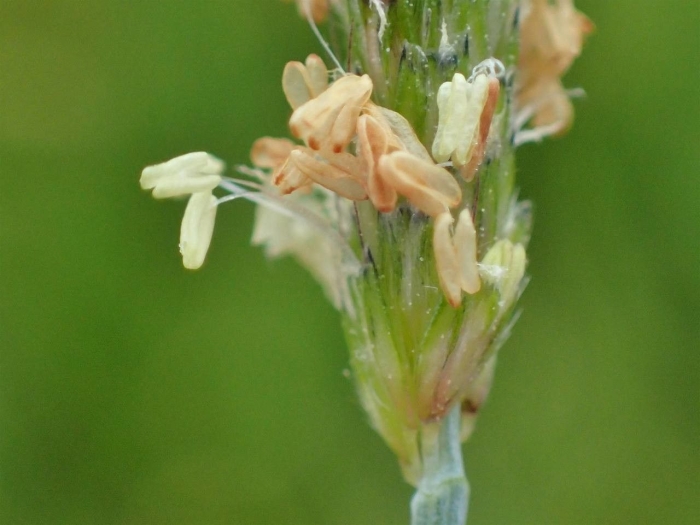Water Foxtail
(Alopecurus geniculatus)
Water Foxtail (Alopecurus geniculatus)
/
/

Yoan MARTIN
CC BY-SA 4.0





































Estimated Native Range
Summary
Water Foxtail is valued for its ability to thrive in wet conditions, making it suitable for riparian plantings, rain gardens, and areas with poor drainage. It is also used for erosion control due to its dense growth habit. This grass prefers full sun but can tolerate partial shade and requires high amounts of water, reflecting its natural preference for wet habitats. It is adaptable to a variety of soil types, as long as they are consistently moist. While not commonly grown for ornamental purposes, it can provide a naturalistic look in appropriate settings. Care should be taken as it can become invasive in some areas, especially where it is not native.CC BY-SA 4.0
Plant Description
- Plant Type: Grass
- Height: 0.8-2 feet
- Width: 1-3 feet
- Growth Rate: Moderate
- Flower Color: N/A
- Flowering Season: Summer
- Leaf Retention: Deciduous
Growth Requirements
- Sun: Full Sun
- Water: High
- Drainage: Slow, Standing
Common Uses
Erosion Control, Low Maintenance, Water Garden
Natural Habitat
native to wet meadows, marshes, and other moist, grassy habitats in Europe
Other Names
Common Names: Marsh Foxtail, Floating Foxtail, Knee-Joint Foxtail, Marsh Meadow Foxtail, Water Meadow Foxtail, Knæbøjet Rævehale, Knick-Fuchsschwanz, Knick-Fuchsschwanzgras, Vulpin Genouillé, Vulpin Géniculé
Scientific Names: , Alopecurus geniculatus, Alopecurus geniculatus subsp. geniculatus, Alopecurus geniculatus var. patagonicus, Alopecurus palustris subsp. geniculatus, Alopecurus bulbosus, Alopecurus pallescens, Alopecurus geniculatus var. bulbosus, Alopecurus geniculatus var. radicans, Alopecurus geniculatus f. gracilic
GBIF Accepted Name: Alopecurus geniculatus L.